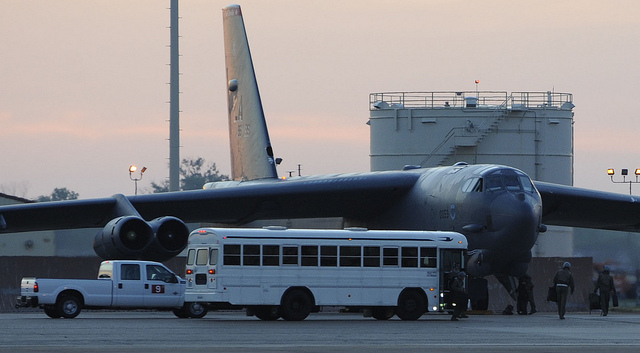Code Green Solutions


Barksdale Air Force Base
The U.S. Air Force uses 64 billion BTUs annually – generating approximately 35 million metric tons of CO2 – and consumes 27 billion gallons of water. This energy and water usage costs the Air Force over $9 billion annually.
Although the majority of that resource and energy consumption is tied to aviation fuel usage, a significant portion comes from maintaining and operating its bases in the U.S., the Pacific, and Europe. Released earlier this year, the U.S. Air Force Energy Strategic Plan, which builds on and expands a 2010 Energy Strategic Plan, outlines an aggressive plan to improve energy and water efficiency in Air Force facilities. The plan states:
“As part of our effort to continue to integrate energy into day-to-day operations, the Air Force is pursuing a net zero posture for installation energy and water to help achieve the federal goal of zero net energy by 2030 for all new facility construction and alterations.”
While much of the strategic plan is understandably focused on reducing aviation and transport fuel usage, the plan also outlines specific targets for facility efficiency improvements, including:
The Air Force is in the process of developing a “strategic, economically sensitive, and integrated approach” to meet these goals, according to the report.
As energy costs continue to increase and government budgets become more fiscally constrained, improving building efficiency at the 59 active bases in the U.S. and other installations here and abroad may provide some of the low-hanging fruit that will help cut resource usage and promote energy security without having to develop expensive new technologies or radically alter operational procedures.